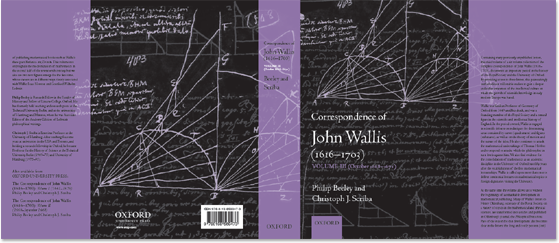The Correspondence of John Wallis: Introducing Volume III
Tags: Editions, Europe, History of Science, John Wallis, Mathematics, Networks, Seventeenth Century
We are pleased to report that Volume III of The Correspondence of John Wallis (1616-1703) – one of a number of epistolary editions the Project is supporting, and the latest installment of the prestigious multi-volume edition of the mathematician’s letters – is now available for pre-order from Oxford University Press, pending publication in May. Painstakingly crafted by our Research Fellow Philip Beeley in conjunction with Christoph J. Scriba, work on the third volume began in the context of the AHRC-funded Wallis Project, and has been completed under the auspices of Cultures of Knowledge.
Consisting of 254 letters in total, the volume covers the exciting period 1668 to 1671, during which England was at peace with itself and its neighbours, publication techniques were becoming ever-more sophisticated (especially with the emergence of academic journals), and scientific activity thrived across the continent. It finds Wallis embroiled in fascinating debates on techniques for determining areas contained by curves (quadratures) and figures (cubatures), as well as on theories of motion and the nature of tides. Other volume highlights include Wallis’s celebrated disputes with Thomas Hobbes and French mathematician François Dulaurens, and ceremonial visits to Oxford by the Crown Prince of Tuscany and William of Orange, during which – in telling evidence of rapid disciplinary consolidation – Wallis presented the visiting dignitaries with examples of state-of-the-art geometrical thinking. Below, Philip discusses the latest installment and looks ahead to Volume IV, which will be delivered in the summer.
For further publication details and to pre-order your copy, please visit the OUP website. For background information about Wallis and other outputs emerging from this sub-project (including podcasts, video, and a complete catalogue of Wallis’s extensive correspondence within Early Modern Letters Online), head along to the Wallis webpage.



 Join
Join 